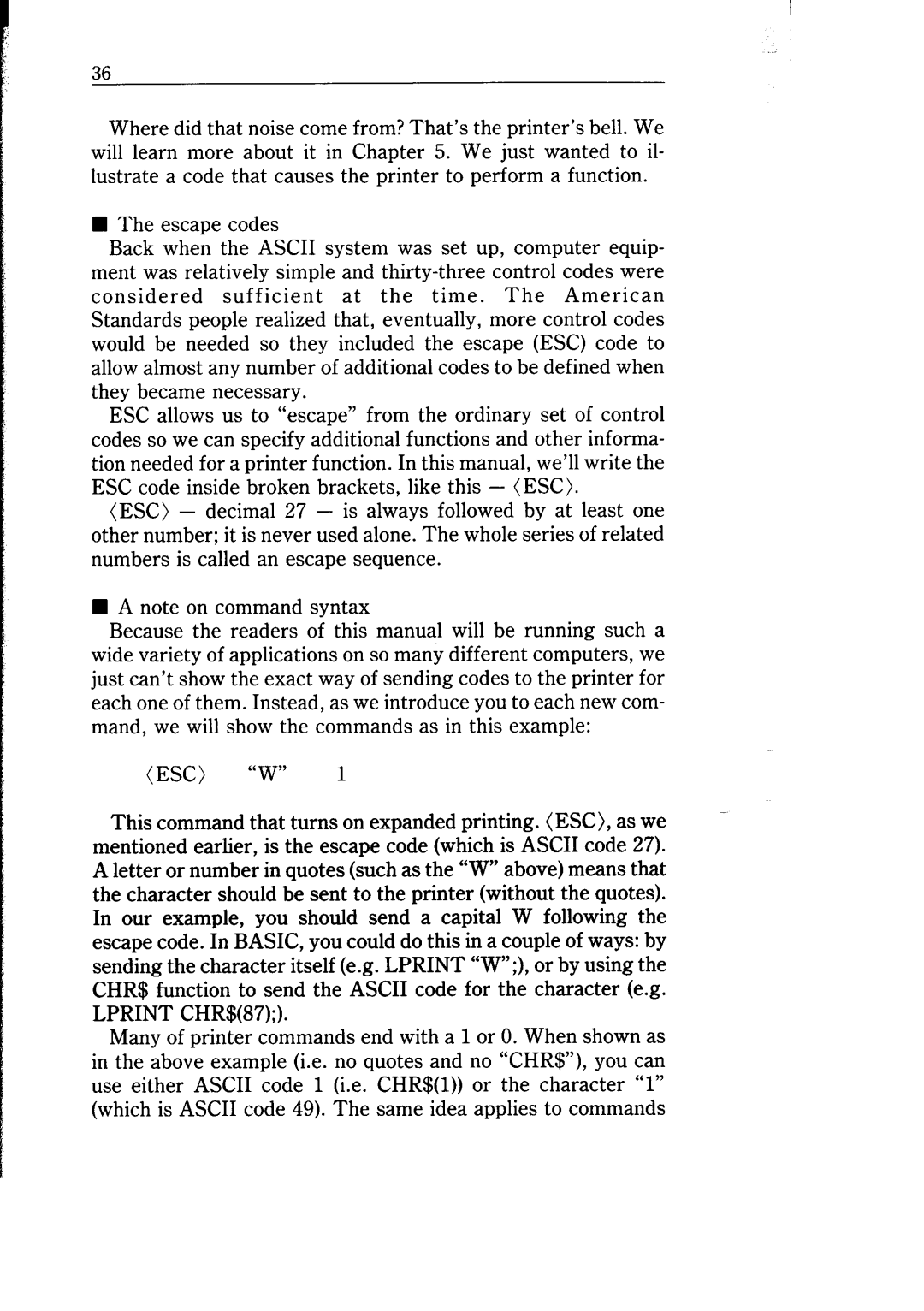
36
Where did that noise come from? That’s the printer’s bell. We will learn more about it in Chapter 5. We just wanted to il- lustrate a code that causes the printer to perform a function.
nThe escape codes
Back when the ASCII system was set up, computer equip- ment was relatively simple and
considered sufficient at the time. The American Standards people realized that, eventually, more control codes would be needed so they included the escape (ESC) code to allow almost any number of additional codes to be defined when they became necessary.
ESC allows us to “escape” from the ordinary set of control codes so we can specify additional functions and other informa- tion needed for a printer function. In this manual, we’ll write the ESC code inside broken brackets, like this - (ESC).
(ESC) - decimal 27 - is always followed by at least one other number; it is never used alone. The whole series of related numbers is called an escape sequence.
nA note on command syntax
Because the readers of this manual will be running such a wide variety of applications on so many different computers, we just can’t show the exact way of sending codes to the printer for each one of them. Instead, as we introduce you to each new com- mand, we will show the commands as in this example:
(ESC) “W” 1
This command that turns on expanded printing. (ESC), as we mentioned earlier, is the escape code (which is ASCII code 27). A letter or number in quotes (such as the “W” above) means that the character should be sent to the printer (without the quotes). In our example, you should send a capital W following the escape code. In BASIC, you could do this in a couple of ways: by sending the character itself (e.g. LPRINT “W”;), or by using the CHR$ function to send the ASCII code for the character (e.g. LPRINT CHR$(87);).
Many of printer commands end with a 1 or 0. When shown as in the above example (i.e. no quotes and no “CHR$“), you can use either ASCII code 1 (i.e. CHR$(l)) or the character “1” (which is ASCII code 49). The same idea applies to commands
